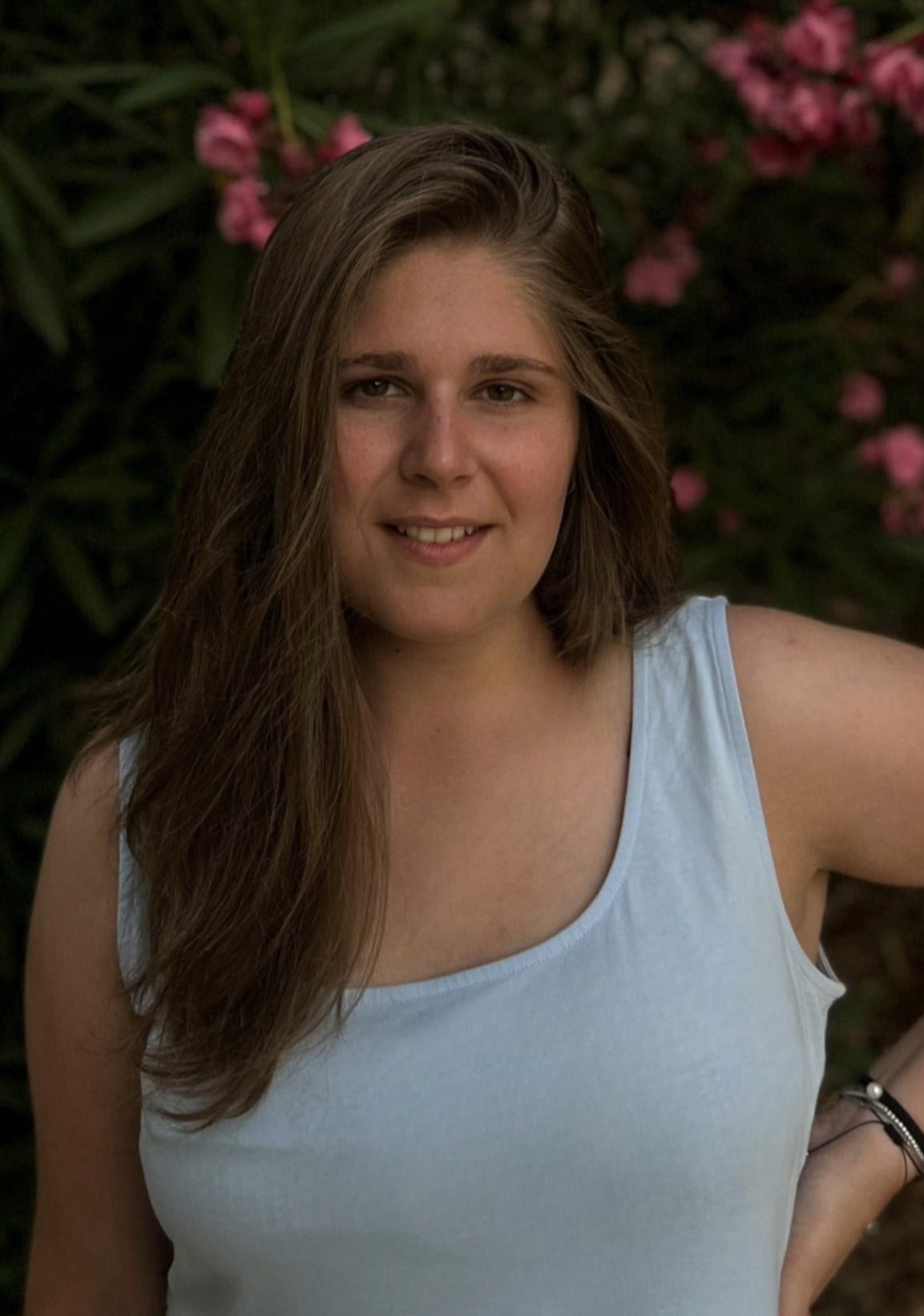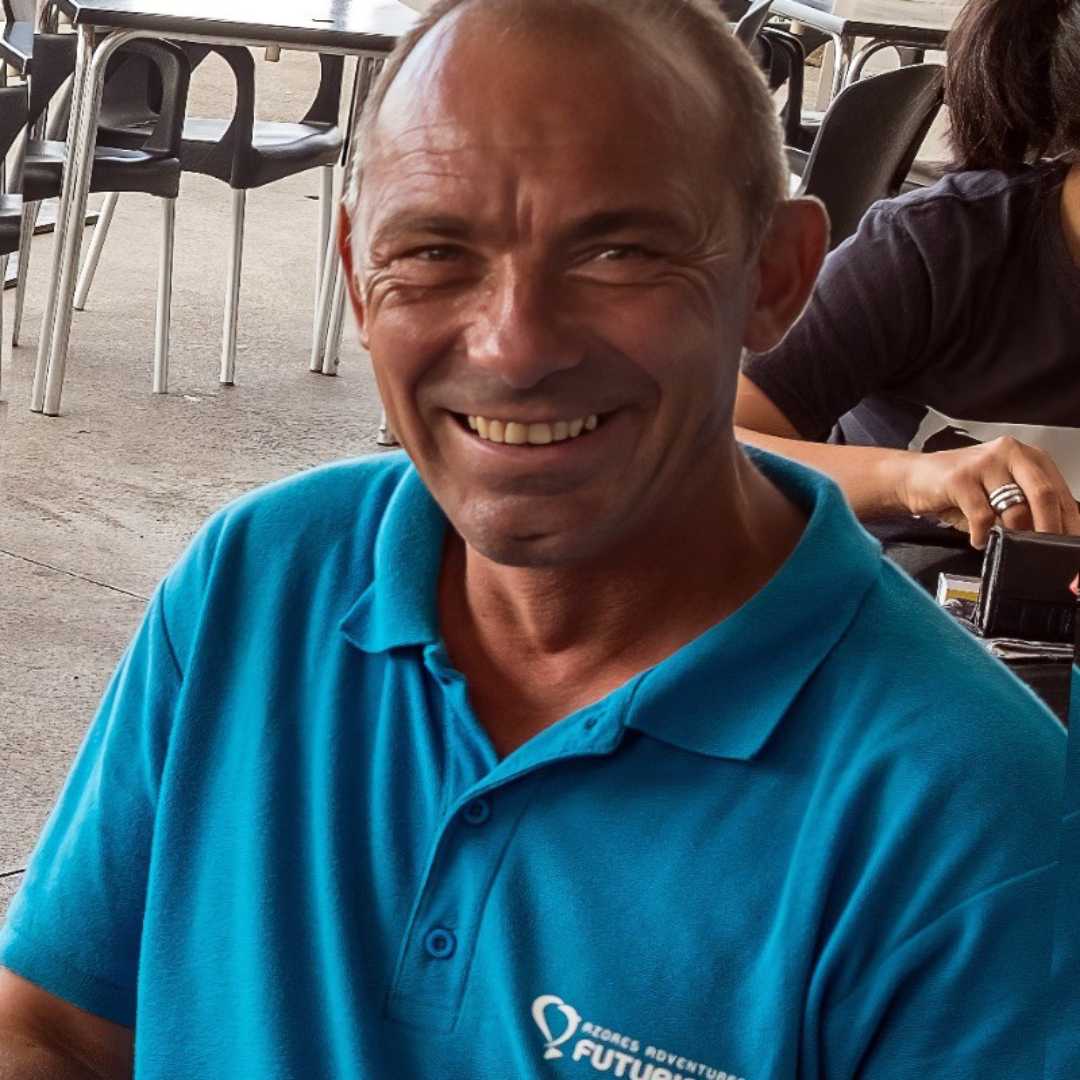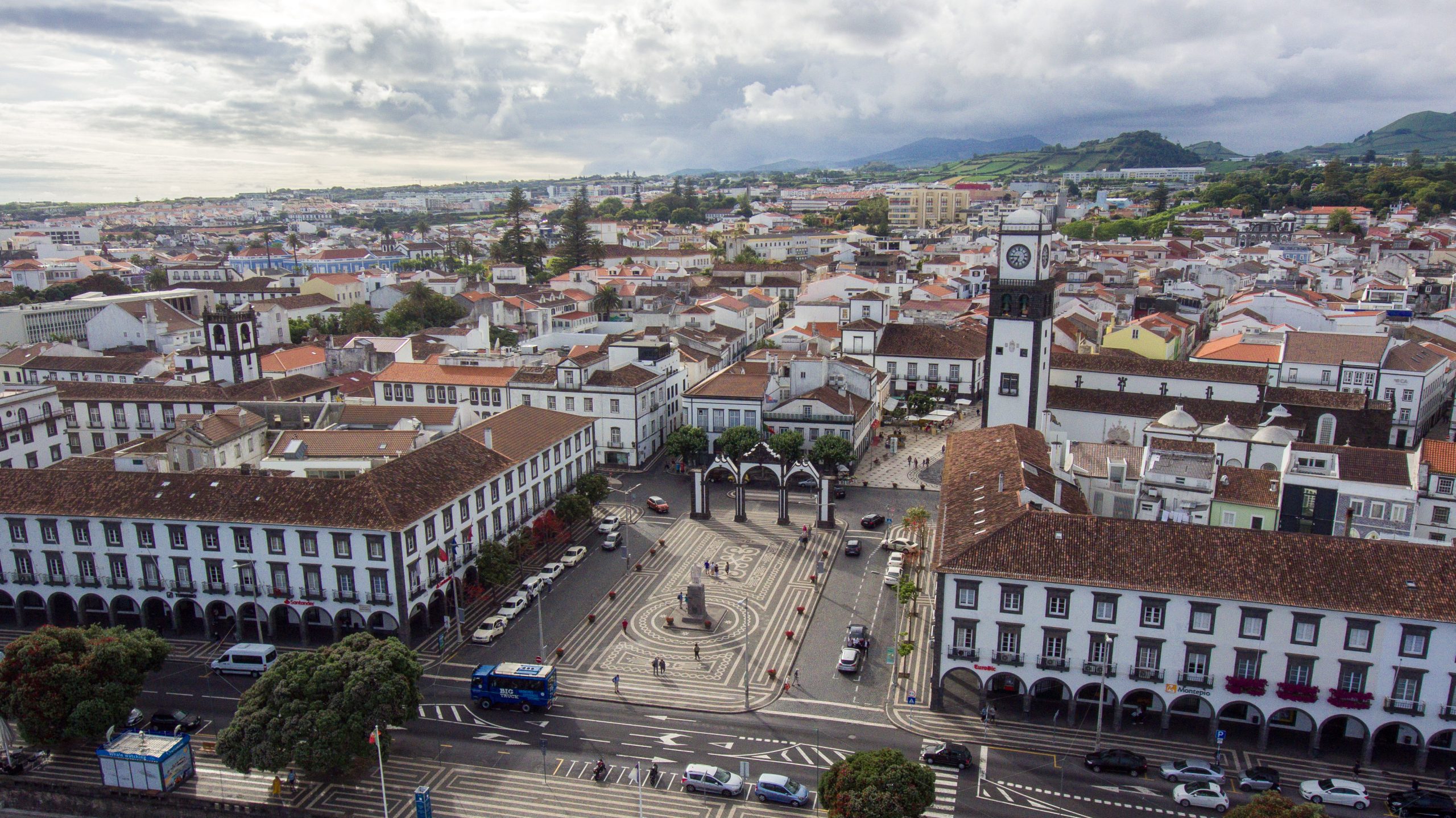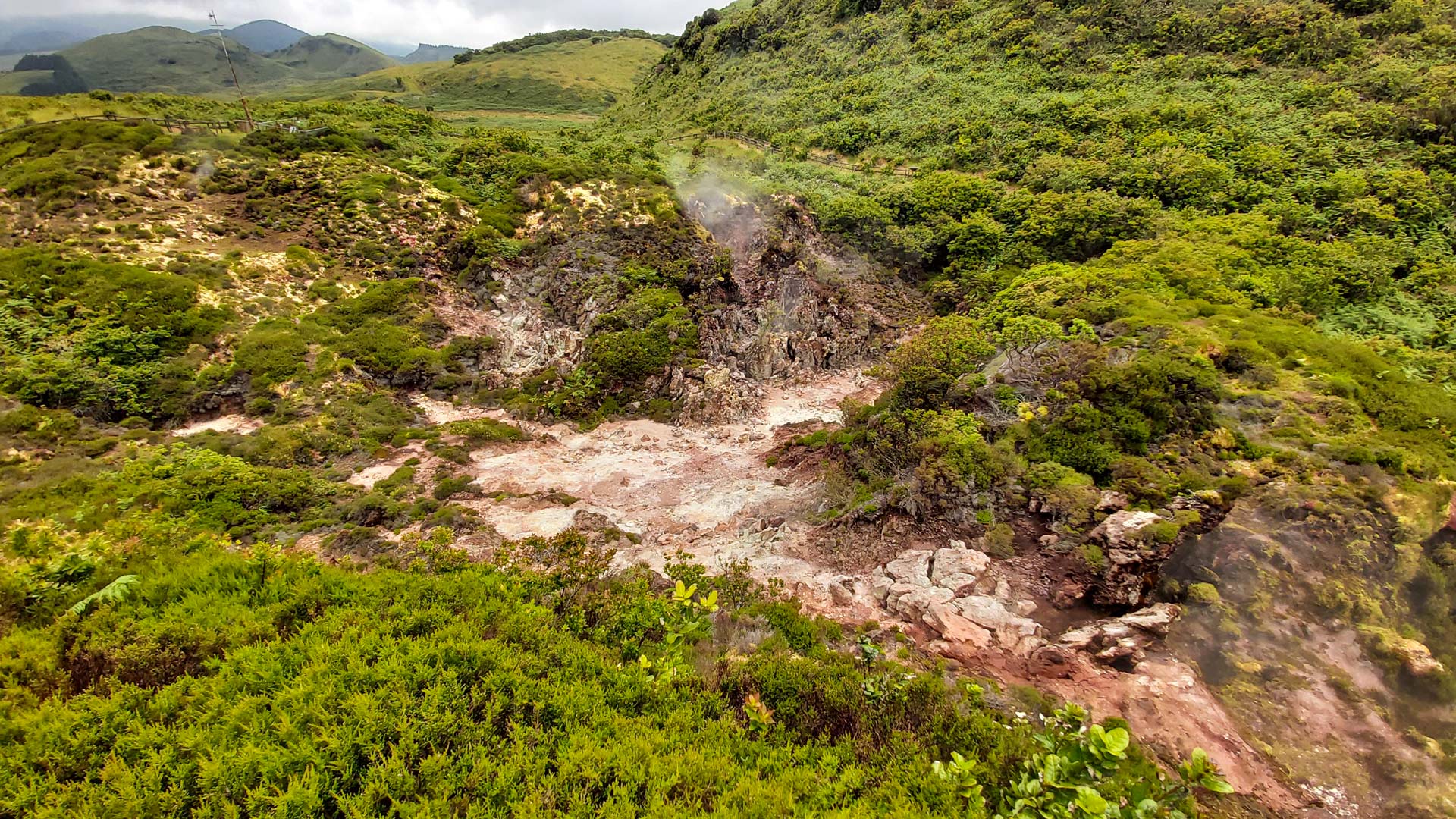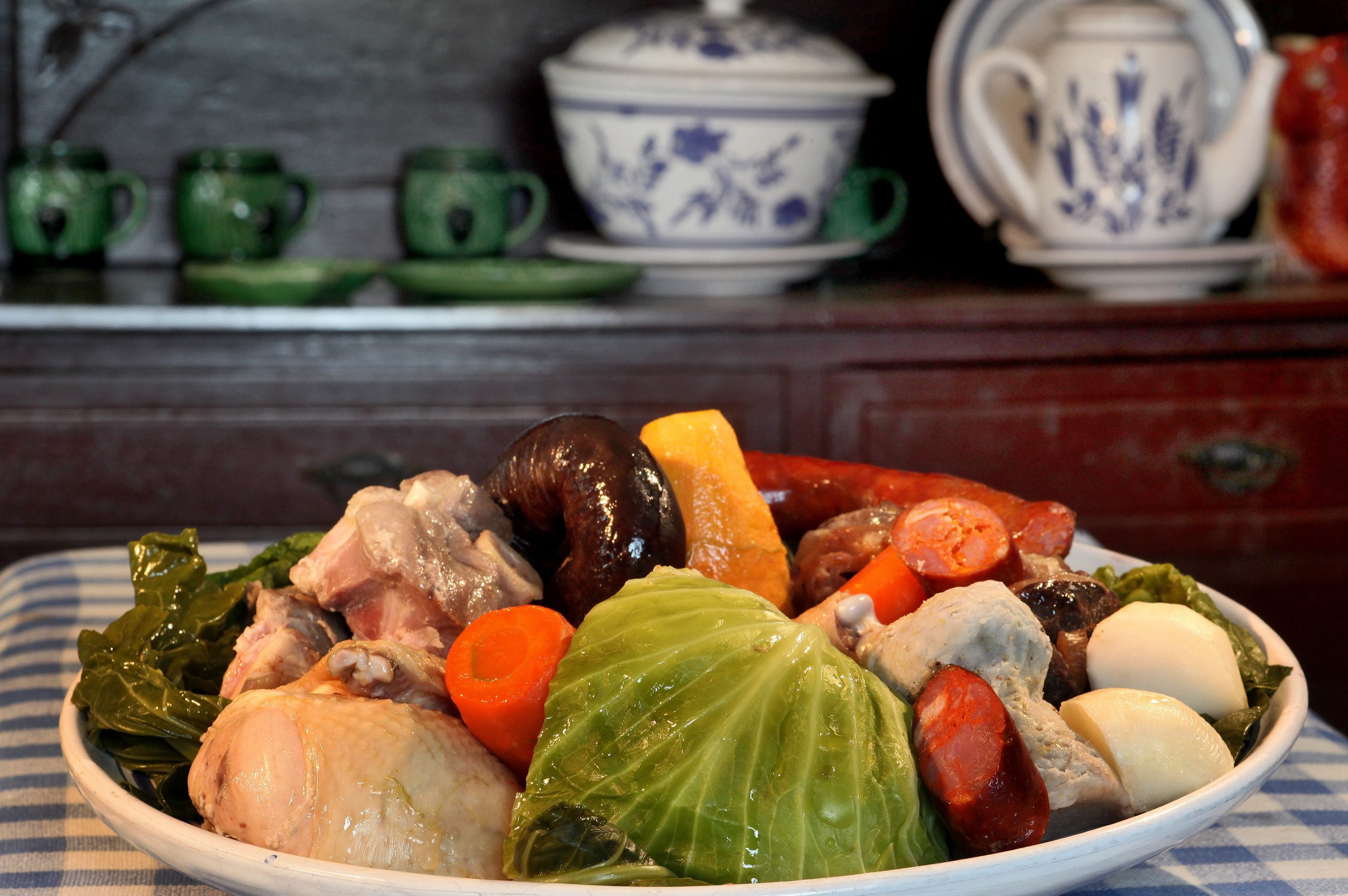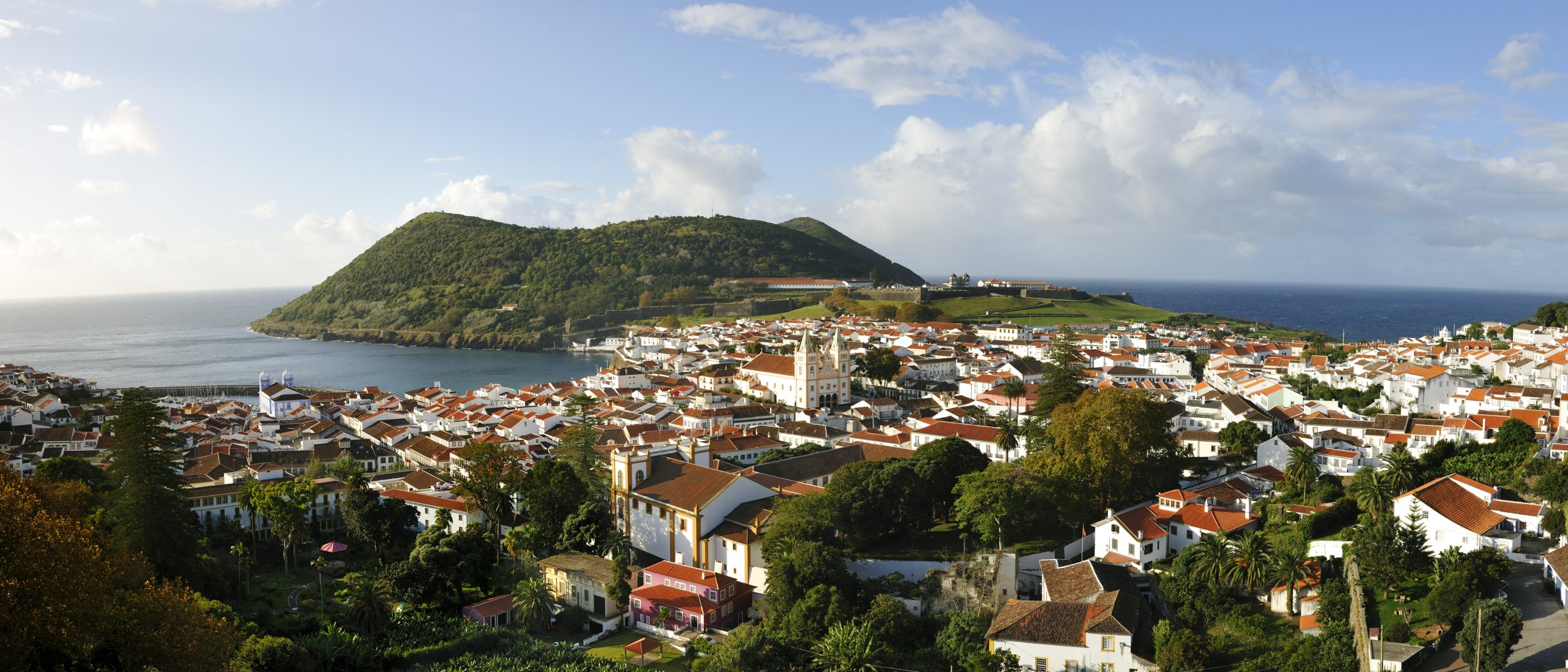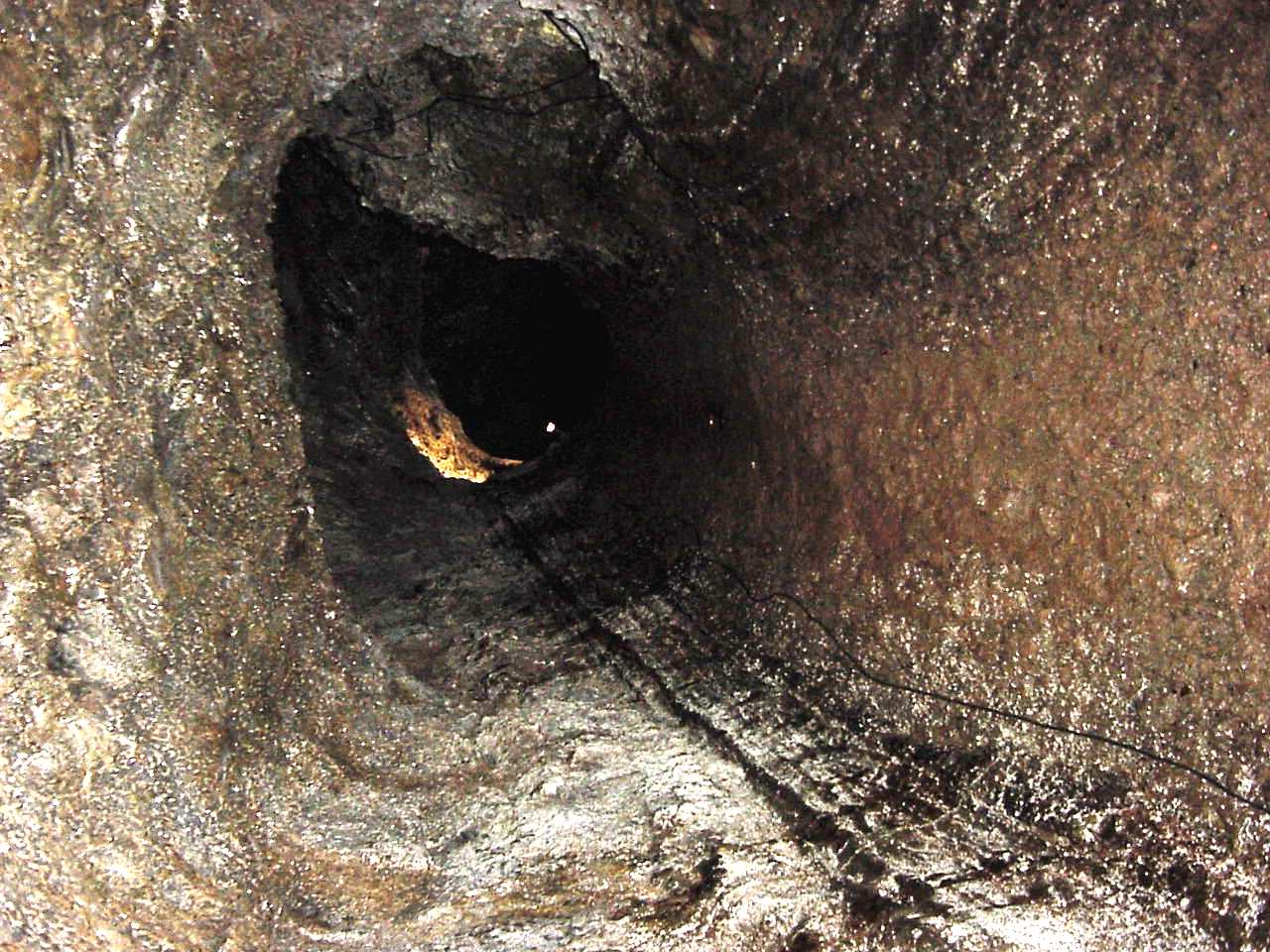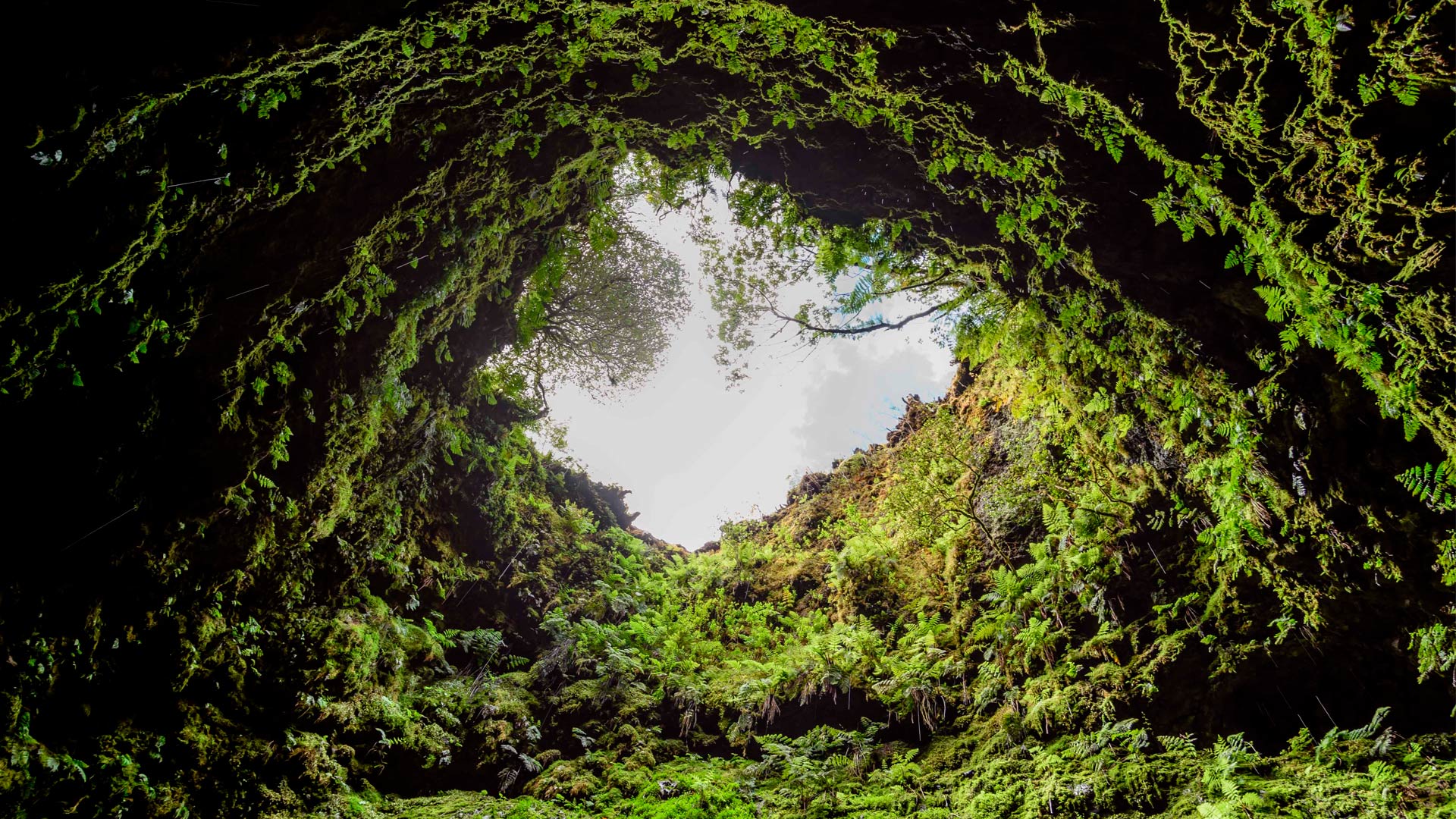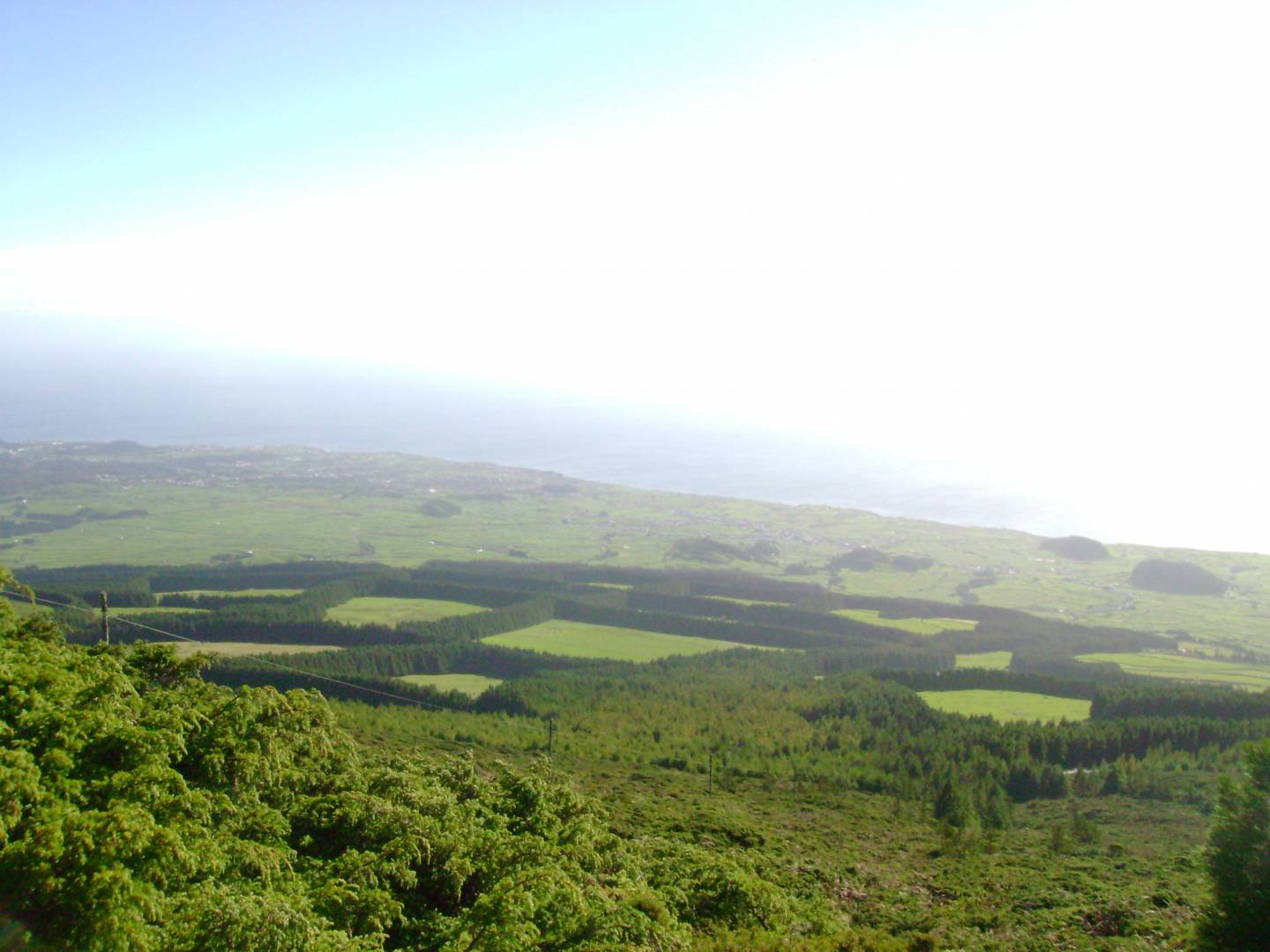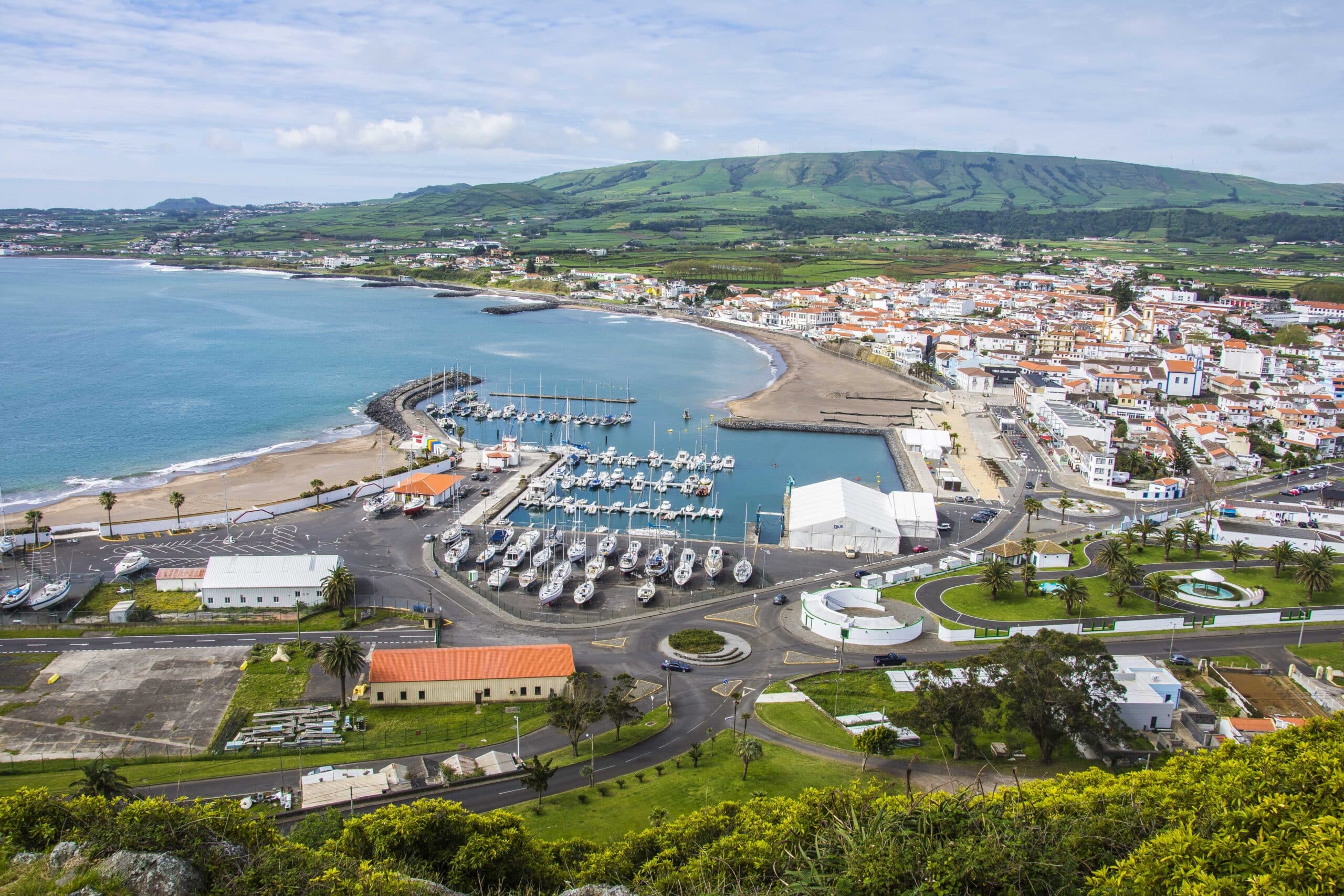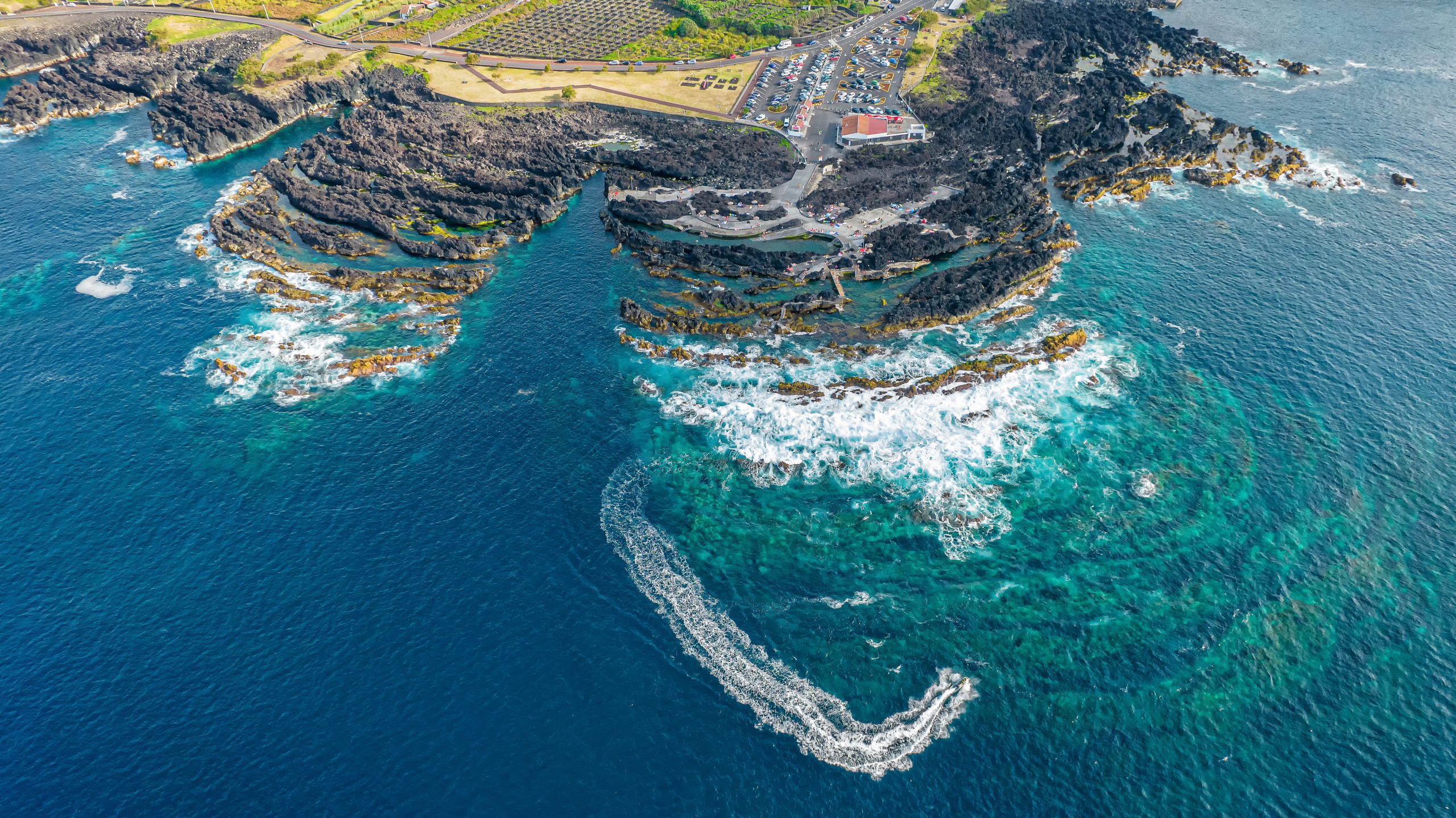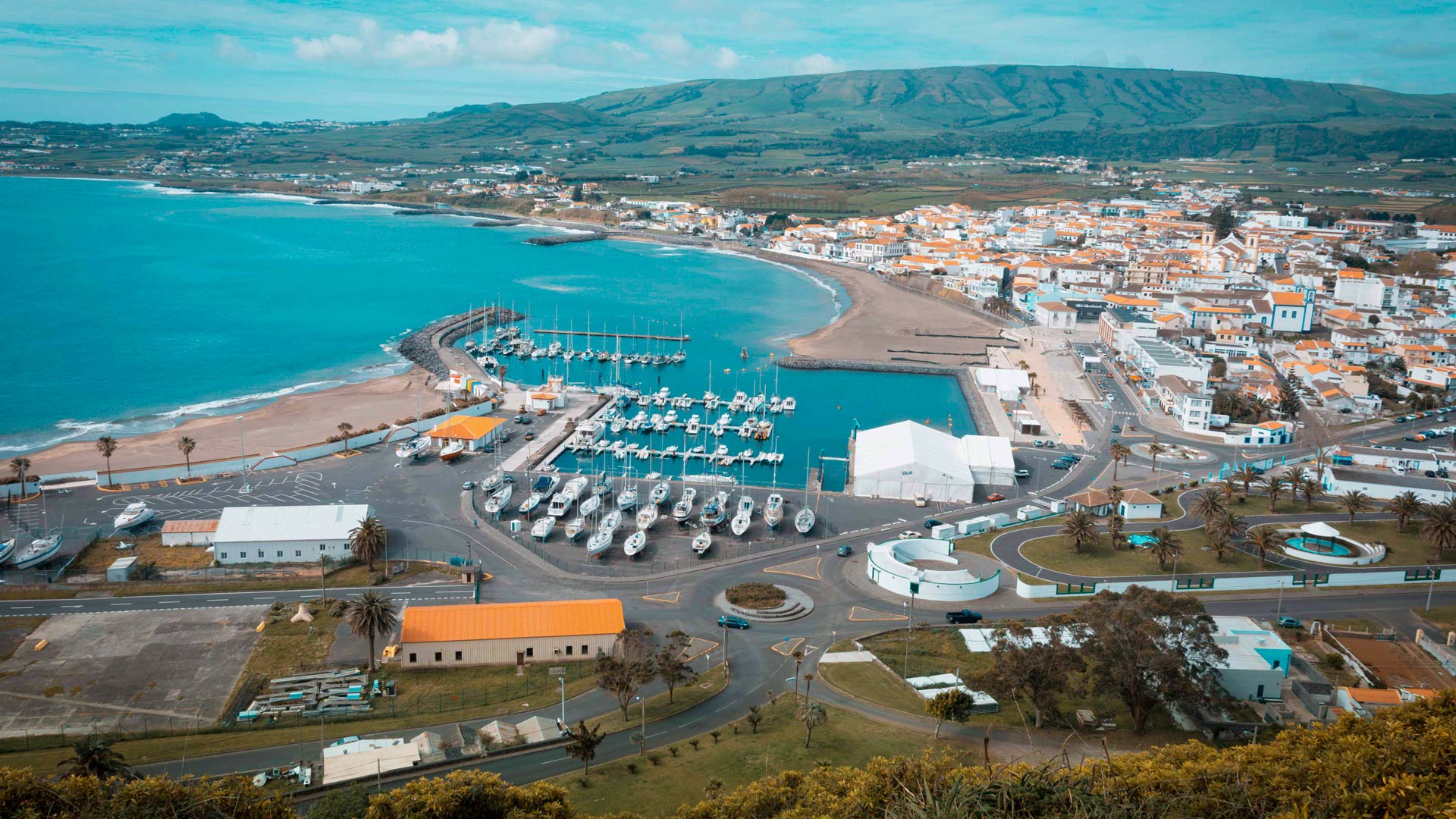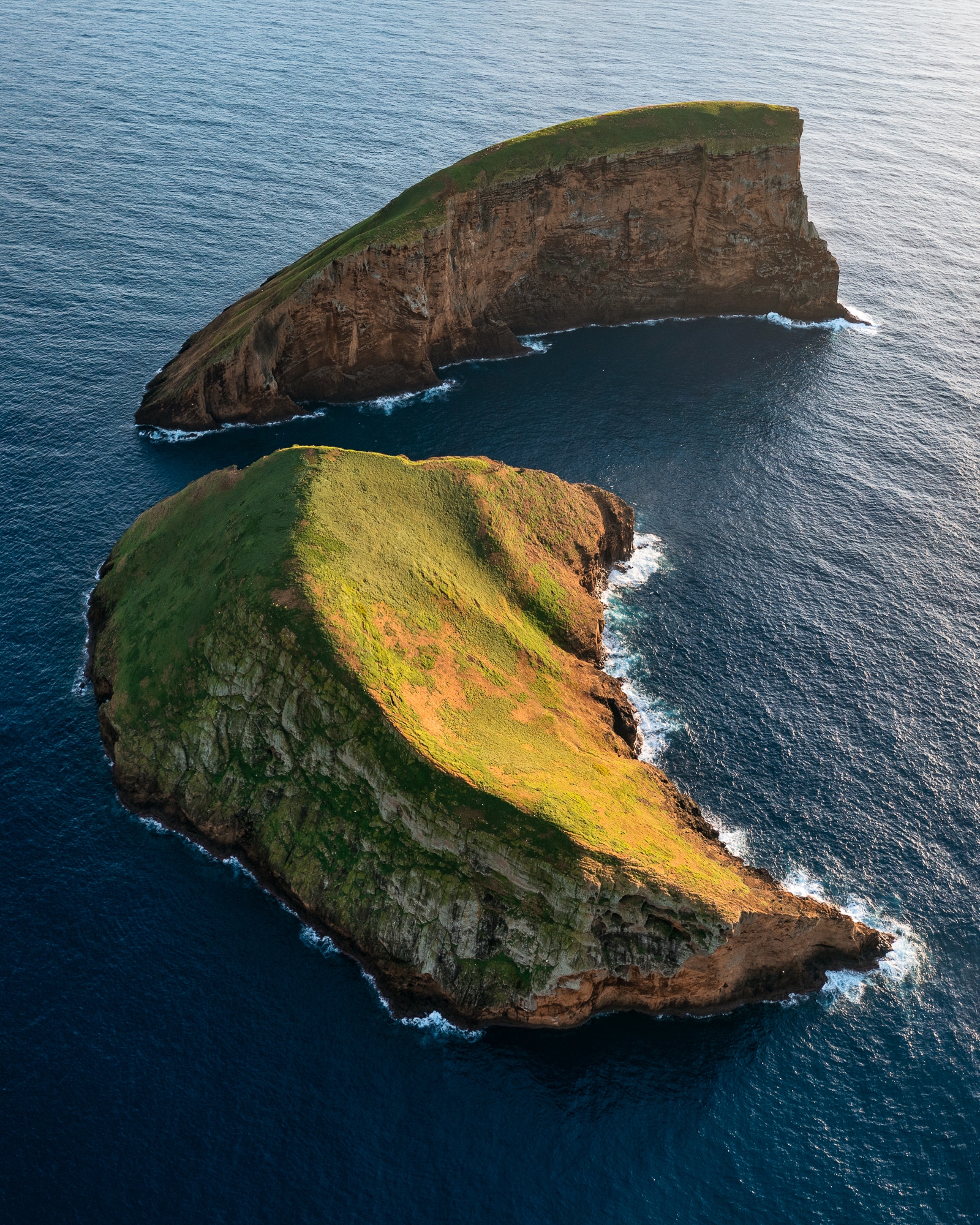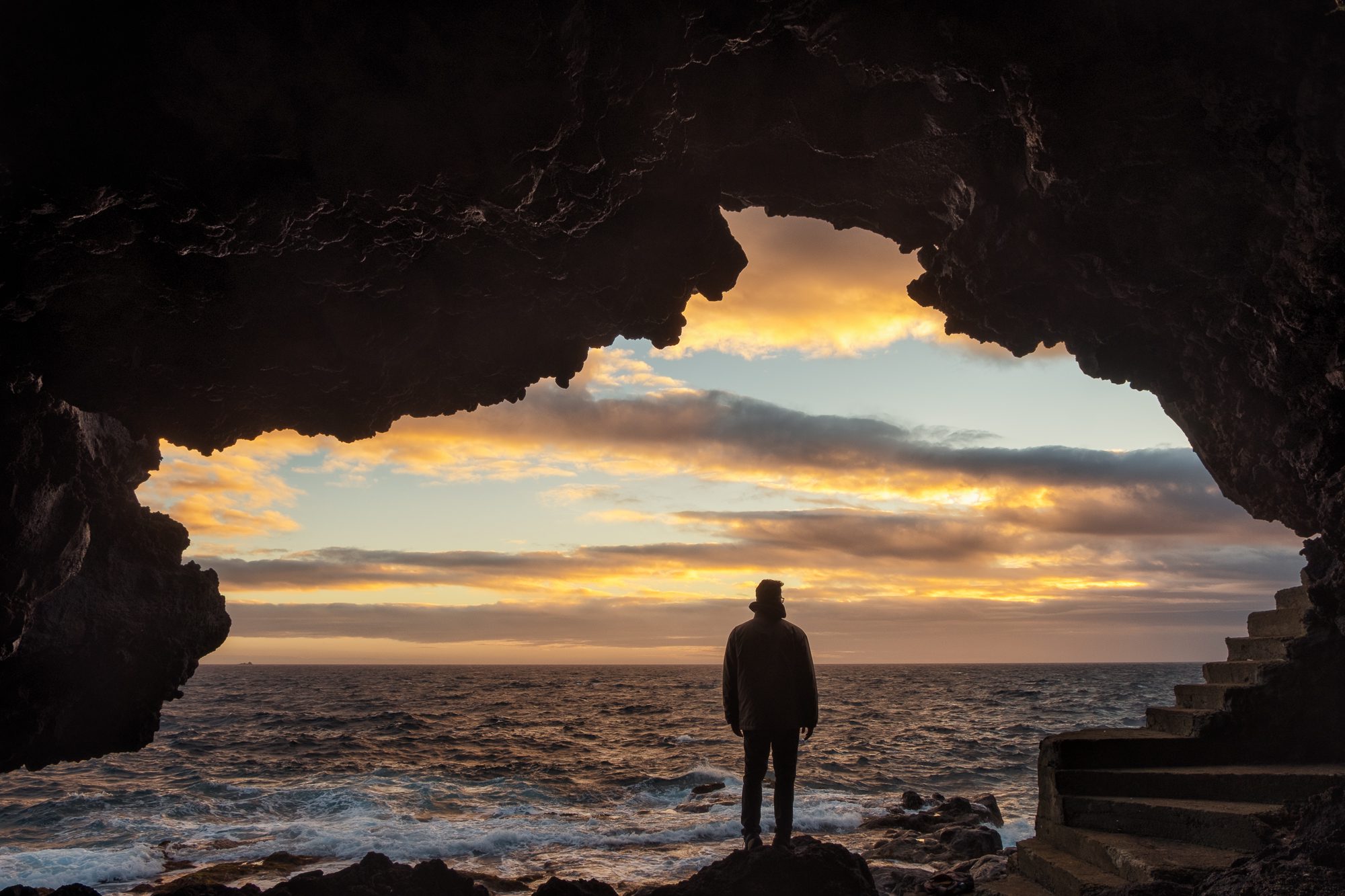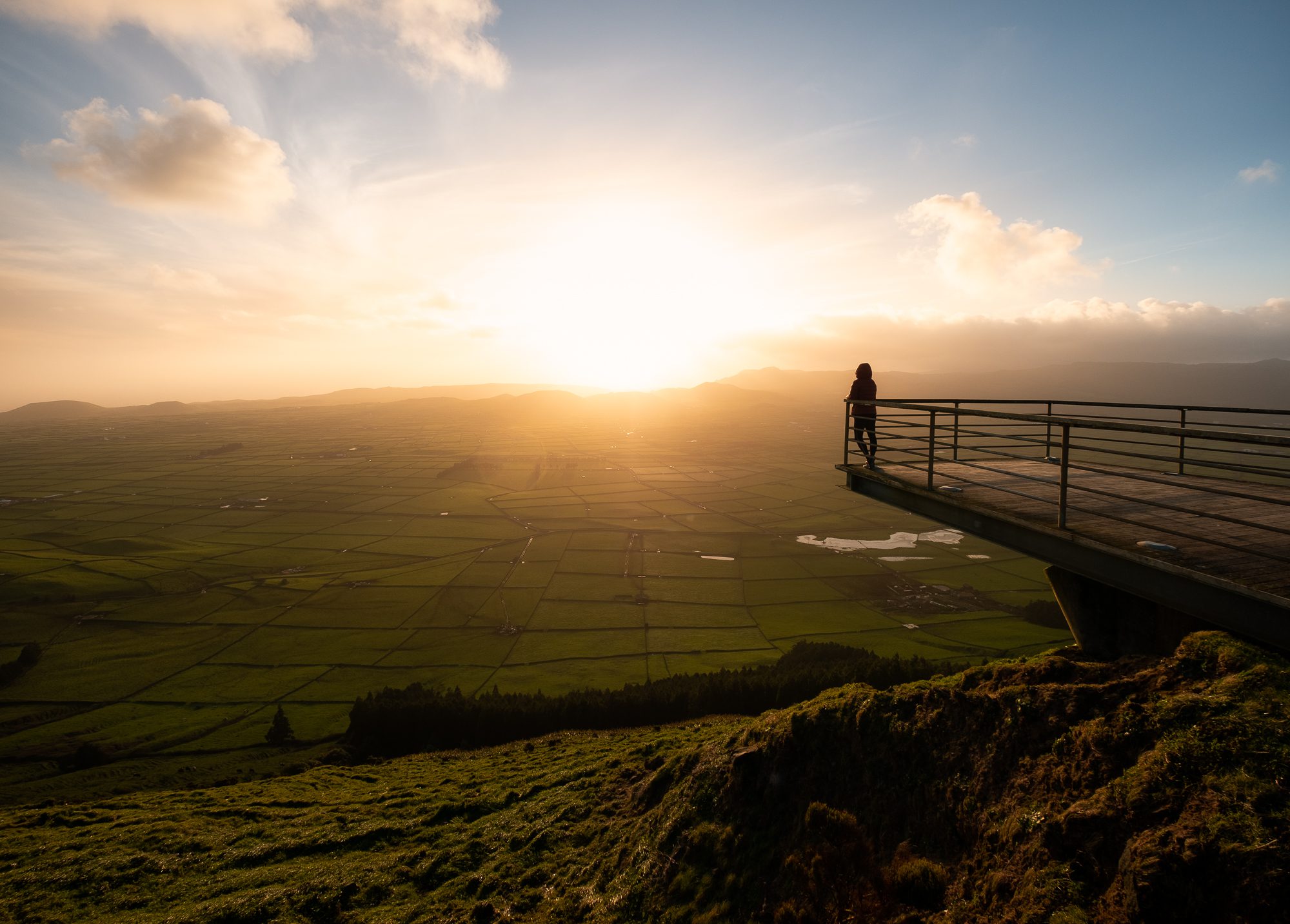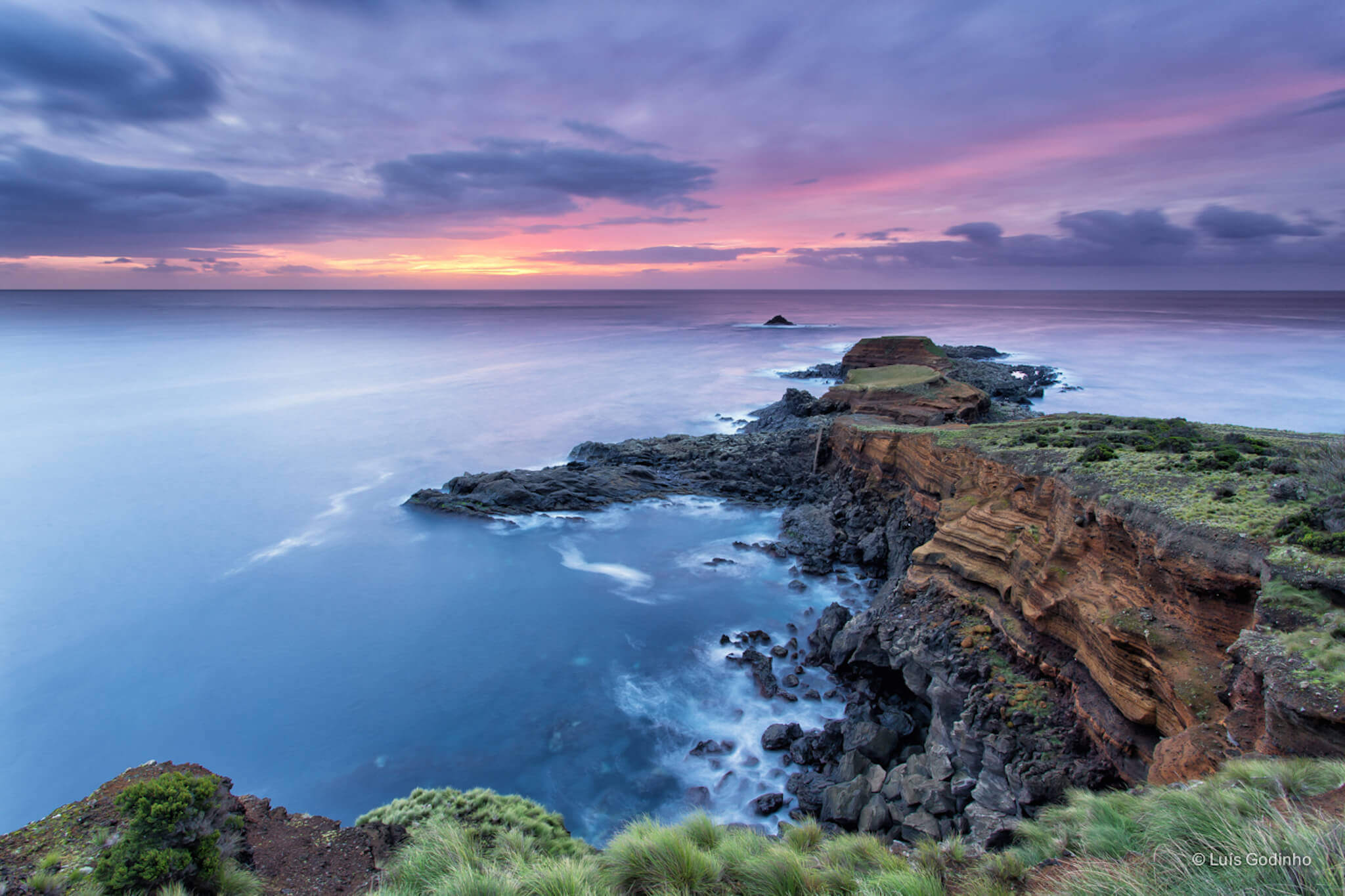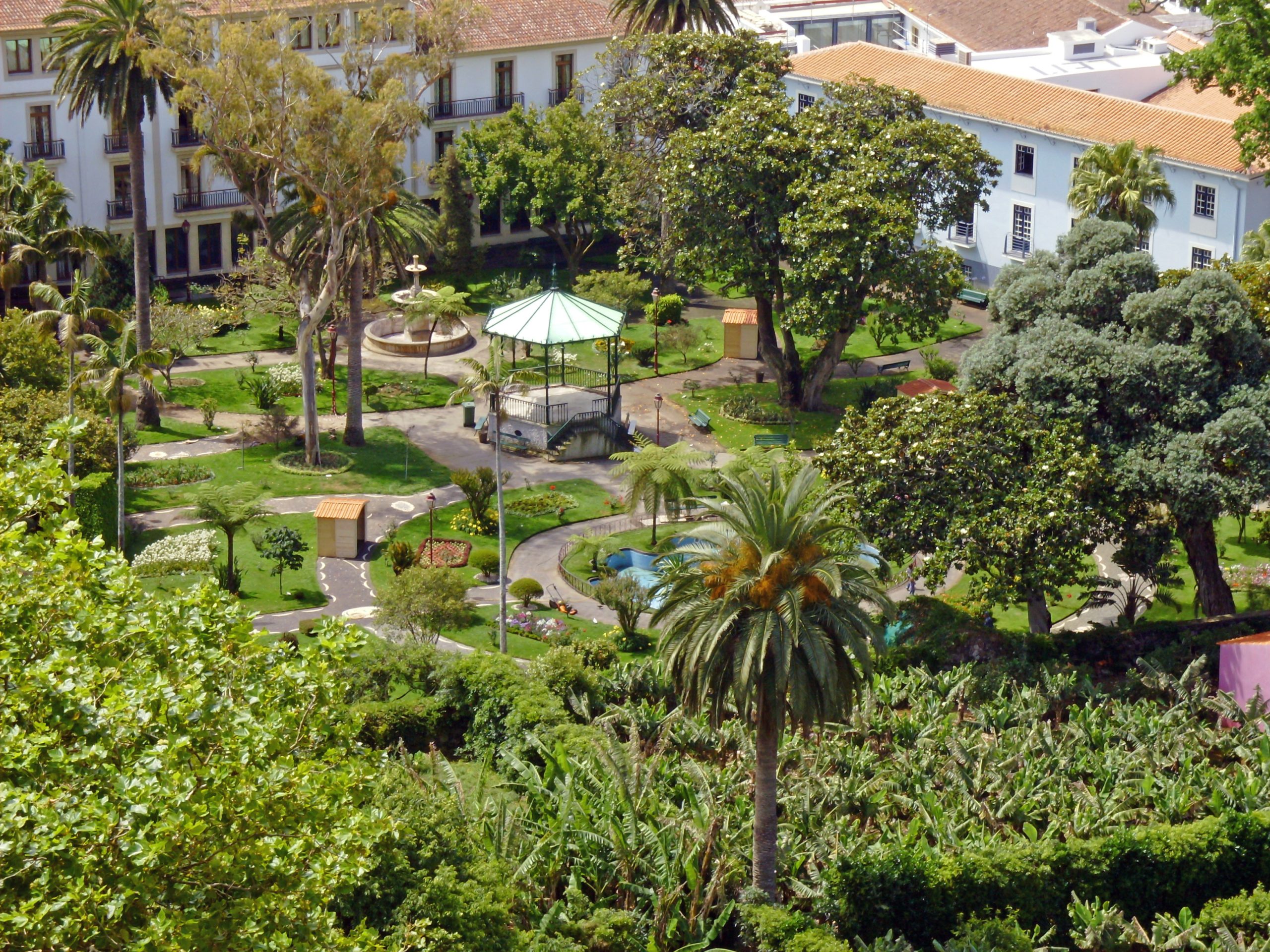Lagoa das Patas, or Lagoa da Falca, rests in the heart of the Lagoa das Patas Forest Reserve. This forest reserve is located in the Doze Ribeiras parish, in Angra do Heroísmo, on Terceira Island.
The calm waters of Lagoa das Patas create a breathtaking natural mirror, reflecting the surrounding landscape. Surrounded by a vibrant forest of cryptomerias, typical of the region, the lagoon offers a true haven of tranquility.
As one of Angra do Heroísmo’s unique natural wonders, this lagoon offers a truly special experience. This article will explore the area’s key attractions and provide insights into what makes this destination special.
What is Lagoa das Patas

Lagoa das Patas, or Lagoa da Falca, sits near a fairly high-altitude stream in the island’s interior. This explains the constant fog. The small lagoon is fed by water flowing from the mountains through Ribeira Brava. It is home to many ducks that waddle among the water lilies. For this reason, people know it as Lagoa das Patas.
The lagoon, surrounded by azaleas, hydrangeas, and other shrubs and trees, conveys the calm and silence of nature. The cryptomeria forest adds to the peaceful atmosphere, making this a true wonder of nature. A leisure park on this site allows visitors to use the space more comfortably.
Fauna & Flora
Surrounded by a cryptomeria forest, Lagoa das Patas is home to a wide variety of species. The lagoon sits in a natural rainfall accumulation area formed by a large, flat peat bog. Along the stream that feeds the lagoon, you can find indigenous Azorean flora, including azaleas, cedar, hydrangeas, heather, and beech.
As for fauna, visitors can spot various bird species. These include mallards, geese, sparrows, wigeons, blackbirds, thrushes, seagulls, and other migratory birds. However, human intervention has significantly impacted the area, causing ecological changes that have led to considerable biodiversity loss.
What to Do at Lagoa das Patas

Lagoa das Patas Forest Reserve
The Lagoa das Patas Recreational Forest Reserve is in the heart of Terceira Island. It lies along the road connecting Pico da Bagacina to Doze Ribeiras. The stunning Falca Lagoon is perfect for relaxing and enjoying nature with family and friends.
The reserve offers picnic areas nestled within the dense forest surrounding the lagoon. It also provides essential facilities such as toilets, free parking, a support house, and a hermitage. While visiting, explore the picturesque Ermida da Falca, a charming landmark that enhances the area’s appeal.
Lagoa das Patas Trail
The Lagoa das Patas Trail is in the São Bartolomeu dos Regatos parish. It begins and ends near the Lagoa das Patas Leisure Area. Along the route, you will cross streams, waterfalls, cryptomeria forests, pastures, and areas rich in endemic vegetation.
With a circular route of approximately 5 km and moderate difficulty, the trail takes around 3 hours to complete. You’ll experience the area’s natural beauty throughout the walk, offering a unique opportunity to connect with nature.
For the best experience, we recommend you bring:
- Sneakers or hiking boots;
- Comfortable clothing;
- Waterproof jacket;
- Sunscreen and a hat;
- Backpack;
- Water and snacks.
Plan Your Visit to Lagoa das Patas
How to Get to Lagoa das Patas
To reach Lagoa das Patas from Angra do Heroísmo, head towards Doze Ribeiras, about 11 km away. The journey takes approximately:
- 15 minutes by car, motorcycle, or taxi;
- 1 hour and 10 minutes by bike;
- 2 hours and 40 minutes on foot.
There are several routes to choose from, allowing you to select the one that suits you best. Travel time may vary depending on your chosen path.
Planning a trip to the Azores? These articles will help you: How to Get to the Azores 🗺️ | Azores airports 🛬 | Flights between islands ✈️ | Ferries between islands ⛴️ | Which island to choose? 🏝️ | What airlines fly to the Azores? 🛩️
Best Time to Visit
Temperatures in Terceira are mild year-round, with the best conditions for visiting Lagoa das Patas from May to September. During this period, the weather is sunny, ideal for nature walks and enjoying the area’s tranquility.
Although the archipelago often experiences cloudy skies, Lagoa das Patas offers a peaceful environment. Even on overcast days, the unique beauty of the landscape in the forest reserve remains, allowing for a serene experience.
Check all our articles about the weather in the Azores throughout the year 🌤️ ☔️: January | February | March | April | May | June | July | August | September | October | November | December
Where to Eat
Click on the following link to find a place near Lagoa das Patas. It will take you to TripAdvisor, where you can review the 10 best restaurants.
Where to Stay
To help with your accommodation, we’ve filtered search results from:
Azores Guide Book
Azorean Language & Phrases 🗣️ | Currency & Banks 💵 | Credit Cards & Traveler’s Cheques 🏧 | Driving in the Azores 🚗 | Electricity 🔌 | Experiences & Tours 🗺️ | Health & Safety 🩺 | Internet & Wi-Fi Access 🛜 | Phones & Mobile Service 📞 | Post Offices & Buying Stamps ✉️ | Public Holidays 🏖️ | Shopping 🛒 | Time & Daylight 🕒 | Whale Watching Guide 🐳 | Best Island to Visit 🏞️
What to Do Around Lagoa das Patas
Viveiro da Falca Forest Reserve

The Viveiro da Falca Recreational Forest Reserve is in the São Bartolomeu dos Regatos parish in Angra do Heroísmo. Created by the Forestry Administration of Terceira, this sanctuary offers nature lovers a unique experience in the island’s heart.
The reserve spans approximately 6 hectares, showcasing the region’s natural beauty. It protects both common and unique Azorean plant species. Hedges of camellias and azaleas border the reserve, while dense cryptomeria forests and oak plantations surround it. The reserve also hosts plane trees, metrosideros, and other species.
With plenty of space for enjoyment, visitors can relax in picnic areas, rest zones, and at tables. The reserve also provides barbecues, toilets, a playground, a playing field, and a car park.
Church of São Bartolomeu de Regatos

The 16th-century Church of São Bartolomeu de Regatos is one of the oldest on Terceira Island. It is a historical landmark in the São Bartolomeu de Regatos parish, Angra do Heroísmo.
The church initially had three naves, two sacristies, an altar, and two side chapels. It also featured a baptistery, a bell tower, and a churchyard, creating a significant historical space. In 1875, it underwent significant renovations and improvements.
Over the years, the church faced several challenges. In 1963, a fire caused significant damage, and in 1964, a natural disaster further impacted the building. Despite these setbacks, the parish acted quickly to restore it. However, in 1980, a major earthquake hit the island, causing more destruction.
After this event, the community completely rebuilt the church. It remains as it is today, showcasing resilience. The church is a testament to its history, symbolizing the community’s strength and determination.
Pico dos Frades
Pico dos Frades, located in the southwestern part of Terceira Island, forms a volcanic cone made of basaltic bagacina. At 325 meters above sea level, it offers stunning views of the Santa Bárbara Volcano and the surrounding landscape.
Historically, it hosted the ‘Corrida de Toros à Corda’, a popular annual event that attracted locals and tourists. Participants guided bulls through the streets by rope during the festival, creating an exciting atmosphere.
Although they phased out the tradition for safety and animal welfare, it remains a key part of Terceira’s cultural history. Today, Pico dos Frades is a significant natural and artistic landmark, showcasing the island’s unique heritage.
Gruta do Natal

The Gruta do Natal (Christmas Cave) is located near Picos Gordos, within the Serra de Santa Bárbara. It is part of the Mistérios Negros Natural Forest Reserve. Known for its excellent facilities, this cave offers the best conditions for visitors.
Despite the marks of human presence, the cave features a fascinating geological structure. It includes various types of lava, staphylites, and side counters. Outside, you’ll find high-altitude pastures and cryptomeria forests.
This magical lava tunnel, stretching approximately 697 meters, offers a unique underground experience. The cave’s bizarre shapes and vivid colors create a surreal atmosphere, leaving you in awe.
Monte Brasil

Monte Brasil, a volcanic cone, formed from an underwater basaltic eruption in shallow waters. This geological wonder has shaped the landscape of Angra do Heroísmo. It provides unique viewpoints with panoramic views and lush vegetation, including native trees and shrubs.
The area is rich in biodiversity, with various wildlife on land and in the surrounding marine environments. Visitors can explore the submerged and semi-submerged caves, home to a wide range of aquatic fauna. These caves and the island’s flora and fauna make Monte Brasil a key spot for nature enthusiasts.
Monte Brasil also has historical significance. It once served as a military stronghold, but today, it is a peaceful retreat for locals and tourists. Explore its natural beauty and enjoy various leisure activities, including hiking trails and sightseeing tours.
Furnas do Enxofre

Furnas do Enxofre is a fumarolic field in the parish of Posto Santo, in Angra do Heroísmo. It covers approximately 14 hectares. This natural monument forms part of the Central Plateau of Terceira. The Azores UNESCO World Geopark recognizes it as a geosite.
Characterized by volcanic and geothermal activity, Furnas do Enxofre emits volcanic gases at high temperatures. The temperature reaches 95 °C at the surface and up to 130 °C at a depth of half a meter. A top-rated tourist destination, it attracts visitors with its unique landscape. However, precautions are essential, as prolonged exposure to sulfurous gases can harm your health.
Check all our articles about each one of the most relevant points of interest on Terceira Island: Algar do Carvão | Biscoitos | Furnas do Enxofre | Gruta do Natal | Jardim Duque da Terceira | Lagoa das Patas | Miradouro Serra do Cume | Miradouro da Serra de Santa Bárbara | Monte Brasil | Ponta das Contendas | Praia da Vitória | Gruta das Agulhas | Ilhéus das Cabras | Miradouro do Facho
Complementary Information
Best Season to Visit the Azores
The Azores Archipelago boasts a unique climate that shapes its lush landscapes, making it a splendid year-round destination. With mild temperatures and minimal fluctuations, each season offers something unique. Spring averages 16 °C, summer reaches 21 °C, autumn cools to 18 °C, and winter remains mild at 14 °C.
→ For a detailed breakdown of the weather by month, check the following links 🌤️☔️: January | February | March | April | May | June | July | August | September | October | November | December
How to Get to the Azores
The Azorean Archipelago is easily accessible through numerous flight routes. Lisbon and Porto are the main entry points to the continent, with direct flights available to São Miguel (PDL), Terceira (TER), Faial (HOR), Pico (PIX), and Santa Maria (SMA). To find the best flight, use search engines like eDreams or Skyscanner. These platforms let you compare prices and schedules from multiple airlines in one convenient location.
For more details on how to get to the Azores, take a look at our complete guide. But what if you want to explore beyond your arrival island? We’ve got you covered!
- Azores airports 🛬
- Flights between islands ✈️
- Ferries between islands ⛴️
- Which island to choose? 🏝️
- What airlines fly to the Azores? 🛩️
→ Once you’ve found the perfect route, book your tickets and get ready to experience one of the world’s most stunning island groups!
Travel Essentials
Essential Information for your Azores trip: Azorean Language & Phrases 🗣️ | Currency & Banks 💵 | Credit Cards & Traveler’s Cheques 🏧 | Driving in the Azores 🚗 | Electricity 🔌 | Experiences & Tours 🗺️ | Health & Safety 🩺 | Internet & Wi-Fi Access 🛜 | Phones & Mobile Service 📞 | Post Offices & Buying Stamps ✉️ | Public Holidays 🏖️ | Shopping 🛒 | Time & Daylight 🕒 | Whale Watching Guide 🐳 | Best Island to Visit 🏞️
Useful Tools & Apps
The weather in the Azores can be variable, so it’s helpful to use some apps before visiting the islands. Spotazores provides live camera feeds from the main tourist attractions, allowing you to check the weather and plan your visit. For accurate weather predictions, use Windy or Windguru — they provide the most reliable predictions.
Video
Conclusion
The Lagoa das Patas and the surrounding forest reserve stand out for their educational value. Enjoy peaceful moments in nature, appreciating the tranquility of the surroundings. Here, you can observe the unique fauna and flora of the region.
Don’t miss other must-see attractions in Angra do Heroísmo. These include Furnas do Enxofre, Monte Brasil, Gruta do Natal, and Viveiros da Falca. With its rich history and natural wonders, Terceira Island is the perfect destination for nature and culture lovers.
Authors’ Note
I am pleased to inform you that all the recommendations in this article are based on my personal experience and observations. As the author, I have personally visited each attraction mentioned, ensuring that every suggestion is grounded in first-hand knowledge and genuine enthusiasm.
FAQs
Lagoa das Patas is located in the parish of Doze Ribeiras, Angra do Heroísmo, on Terceira Island. It is part of the Lagoa das Patas Recreational Forest Reserve.
Lagoa das Patas is famed for its peaceful environment, surrounded by dense cryptomeria forests. The lagoon’s calm waters reflect the stunning surrounding nature, resembling a natural mirror.
Visitors can enjoy leisurely moments in nature, observing the region’s unique fauna and flora. The area is perfect for walks and relaxation, and offers a beautiful setting for picnics.
To reach Lagoa das Patas from Angra do Heroísmo, head toward Doze Ribeiras. It is an 11 km drive, taking approximately 15 minutes by car or motorcycle. Alternatively, you can travel by bike or on foot.

